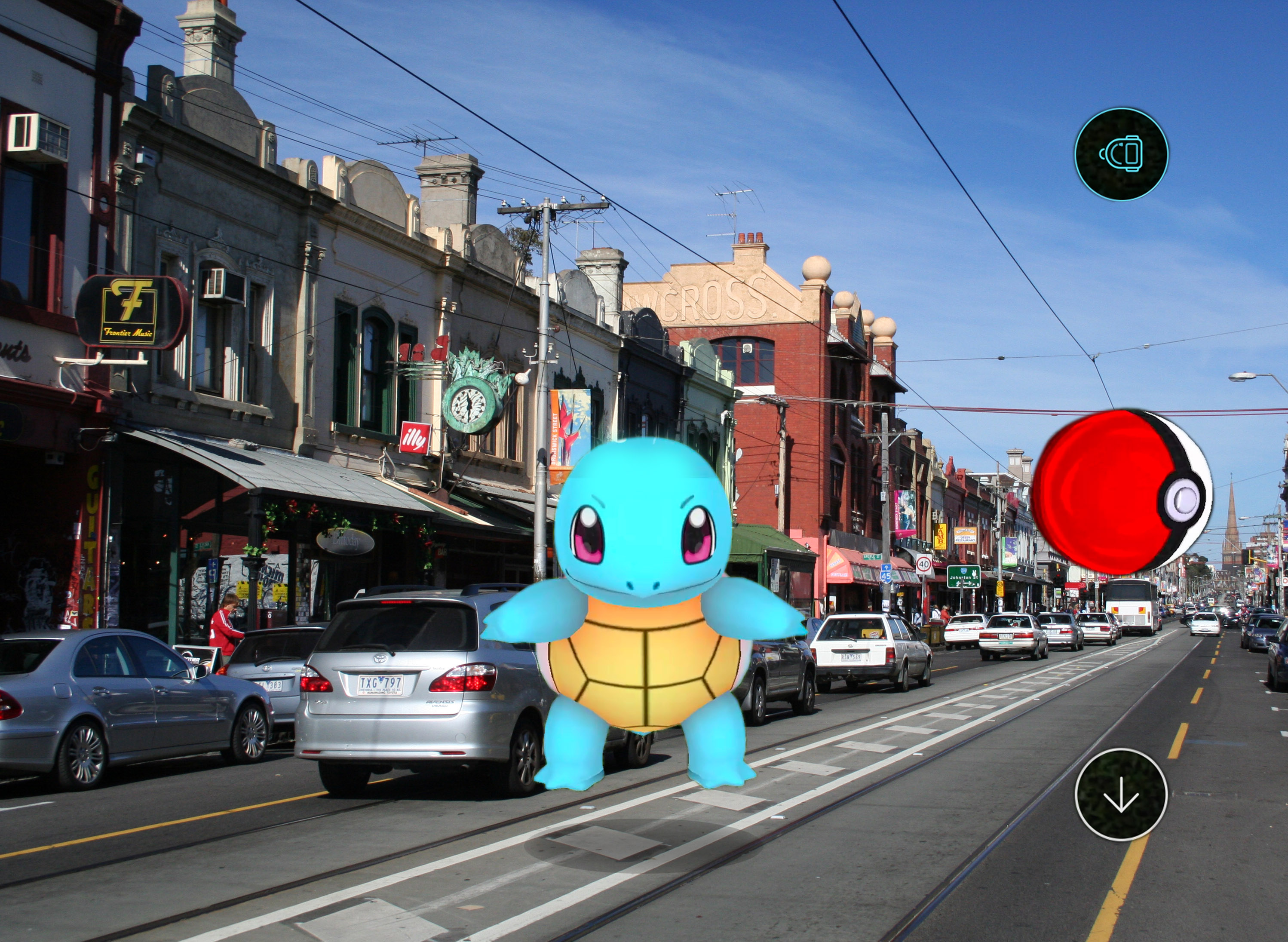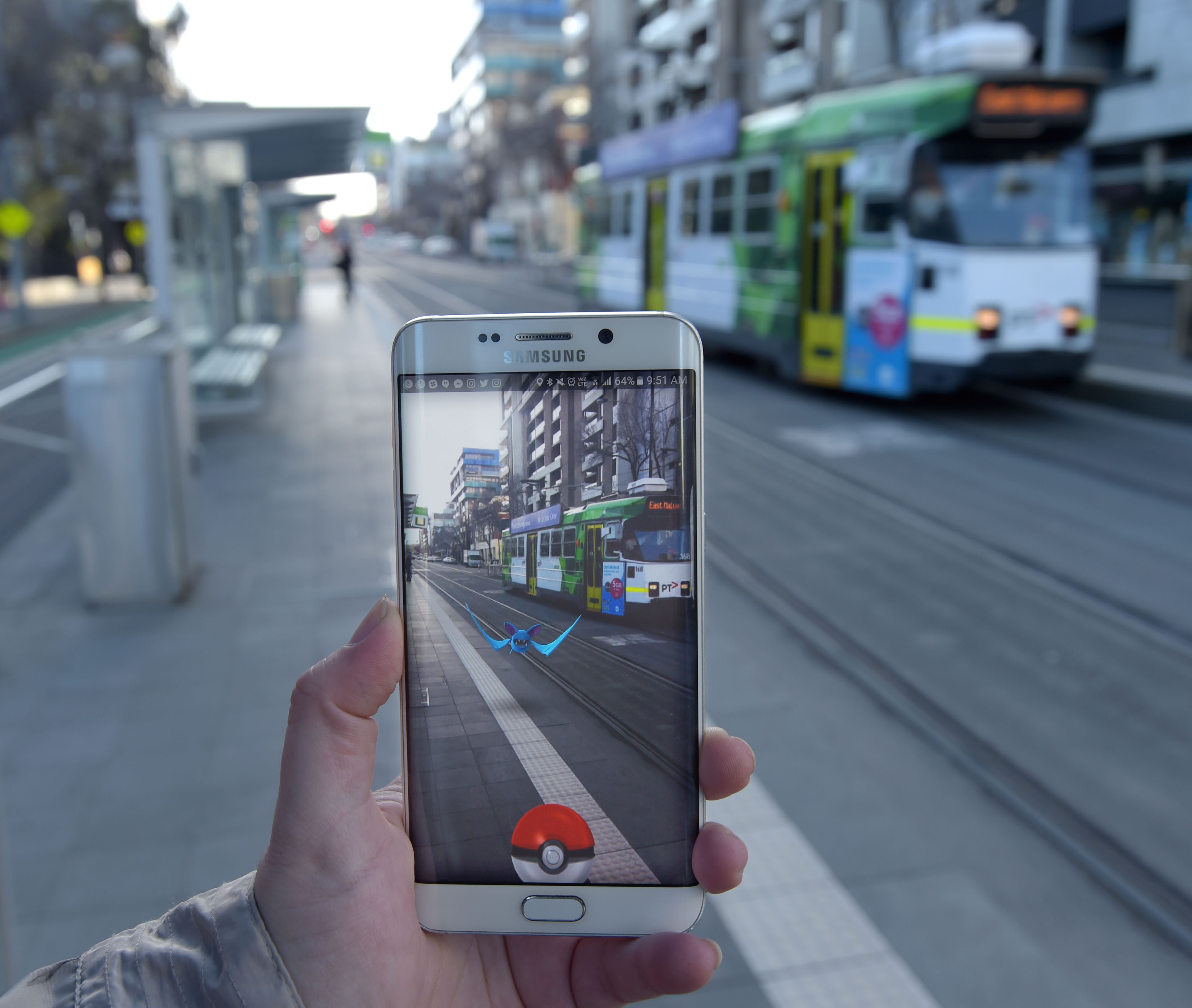Pokémon Go a walk in the park

The techno-panic over Pokémon Go misses the point that we already have the techno-etiquette to deal with it
Published 13 July 2016
The world is abuzz with Pokémon Go. It seems almost impossible to find anything in social media news feeds that isn’t directly related to the game. So too with real life – people wandering through schools, parks, and public spaces, suddenly caught up in the latest mobile game. We’re seeing a huge number of people change their behaviour in response to one free mobile game, and it’s happening all over the world. The question is, what’s actually happening, and how might we manage it ourselves?
In terms of its development, Pokémon Go is the latest project by Niantic Labs, which makes games based on real-world maps. The precursor game by Niantic, Ingress, was developed as a means of creating a gigantic database of playable locations, which would eventually become the database on which Pokémon Go would operate. As such, Pokémon Go is merely the most recent and most successful Augmented Reality game (AR) that we’ve seen thus far.

AR games seek to blend the digital world with the material, using real world environments as a part of the backdrop for digital gaming. ARs have a long history, which has been well detailed by other scholars. Pokémon Go is a part of that history, with its own problems.
But is Pokémon Go really that much of a development from previous games? A better way to understand it is that it’s the first time an AR game has developed a popular player base. Pokémon Go has grown very quickly, as it’s now competing with Twitter in terms of daily active users.
But it seems like the romance is already nearly over. Already we read how the game has “sent” children to “notorious gay beats”, that “Pokémon Go Is a Government Surveillance Psyop Conspiracy”, or that criminal gangs are manipulating the game world to entice phone-wielding victims in proximity to their vans.
Certainly, some of these are serious issues, some of which can be managed by ensuring your privacy settings are properly managed, while others are better dealt with by ensuring players don’t forget about their safety and security while they’re out catching Pokémon.
Real risk versus perceived risk
So, now that Pokémon Go is comfortably in the midst of a moral panic, what can we do? It’s helpful to remember that we’ve been here before. New technologies have always been followed closely by fears they’ll put individuals and society at risk. Telephones, electric lights, and writing were all seen as the harbingers of chaos: telephones were feared to encourage promiscuity amongst women, domestic use of electric lights was going to embolden predators who could now see inside houses, and the written word was – according to Plato – going to induce mass forgetfulness.
Today however, we see each of these technologies as mundane and harmless – their “risks” have been incorporated into how we use technology and how society functions in the face of such developments. Keeping this long history of “techno-panic” in mind provides valuable perspective when thinking about our concerns with new technologies.
In particular, it helps us remember to differentiate between the real risks of playing Pokémon Go and the perceived risks that make for good stories. There is, for example, no greater risk of finding a dead body if you are playing Pokémon Go as opposed to walking your dog. In contrast, the much less sexy issue of privacy and data mining is worth consideration, but getting far less air time.

Similarly, it’s important to distinguish between risks that are produced by the game and risks that are part of being outside and using a phone. Many of the injuries reportedly suffered while playing the game are examples of this.
It’s also important to keep in mind most people are already well equipped to deal with the key feature of playing Pokémon Go – being outside in public space. In some ways, this makes Pokémon Go far less risky and ethically fraught than other digital practices. This is because we already have etiquettes and commonsense guidelines for dealing with the world in which it takes place, and are well practised at communicating these issues to children. For instance, guidelines given to children about how far from home they can ride their bikes provides an automatic blueprint for where they can and can’t play the game.
In contrast, discussing whether it is okay to screenshot a private message, or to share particular information on social media, is much more complicated because the usual rules of thumb we’ve produced over the last few centuries don’t translate easily to the very recent complications of our messy private/public space of social media.
As Marcus Carter and Eduardo Velloso have written in The Conversation, it’s also important to recognise that Niantic has a responsibility to help instill some of these commonsense judgements by providing an efficient system for incorporating feedback about locations that are unsafe or inappropriate.
It’s necessary to remember that with any new popular technology, we’re always going to highlight the problems. This isn’t a bad thing, but rather a part of how society understands and reconfigures itself in response to sudden changes. In fact, the issues being raised by Pokémon Go are exactly opposite to the concerns in the ’90s about kids spending too much time inside on the computer, and missing out on opportunities to get fit. And, if anything, Pokémon Go is certainly getting people outdoors.
Banner image: Squirtle in the suburbs. Artwork: Lep Beljac


